#I debated not posting it for esoteric reasons
Explore tagged Tumblr posts
Text



Make AUs of your own OCs. My final message to the world...
#my ocs#beebfreeb art tag#didl#daisy in dreamland#What if the Salesman was put in a different environment after being created?#Well the answer is that none of the formative people or events that made him who he is would've happened.#So he would have never become the Salesman at all and is instead some other guy.#Scheduling this after making this post at 3 am#I debated not posting it for esoteric reasons#the salesman
91 notes
·
View notes
Note
1. What are some aspects of Huli Jing (Chinese Fox Spirits) you feel deserve more attention in fictional media featuring them? 2. What are some subtle differences between Chinese stories about them vs Japanese ones that most people don't pick up on?
Tbh I don’t really like huli jing as the default term, not least because there’s an argument to be made that due to the modern metaphorical use it might lead to the misconception that it describes a being who can only be female (tbf, that IS a common misunderstanding already), which is entirely unwarranted, as male fox stories were abundant at least before the Ming and Qing periods (side note: wiktionary incorrectly claims huli jing is specifically a term for the nine-tailed fox which is… deeply puzzling to say the least). It’s not really the most commonly used in academic literature either, huxian seems to be the #1 option and it also has the bonus of being the most common - default, even - designation for foxes in the Qing period already according to Xiaofei Kang. I’m not really sure if huli jing is all that more common than huwang (I really like this one), humei (another favorite; not least because its derivative humei gui is a rare translation of dakini and can probably be directly credited for the development of Dakiniten in Japan), huyao, huguai, hugui, husui and so on. Ultimately given that plain hu is hardly uncommon in stories dealing with supernatural foxes, and the fact that the idea was very much that every single real specimen possesses at least some supernatural powers, I also see no strong reason to avoid simply calling a fox a fox.
Linguistic considerations aside: what’s missing is what was originally at the core. I don’t really get the impression that most modern media with foxes in them does much with the fact that the classic stories often used foxes to represent The Other. And while obviously “Tang period stereotype of a Sogdian” is not exactly a character archetype very relevant today, you’d think that if anything this would overall be a topic of even more interest to modern audiences. While the historical examples typically deal with The Other defined by ethnicity or class, it’s not like the framework can’t be adapted to deal with other matters.
A related but not fully identical aspect of many of the original stories which I personally don’t see much is that the average fox character appears to often be driven by assorted neuroses and paranoid fears, which, similarly, you’d think would if anything be even more interesting to modern audiences. Obviously, this often reflects the anxieties of the original compilers - such as low level officials from humble backgrounds who struggled with navigating the hermetic world of hereditary nobility. However, some of them are universal - it’s not like a sense of alienation is rare today.
I think a lot of media with fox characters is too preoccupied with superficial fox aesthetics (terribly sorry to disappoint everyone but I’m not aware of any historical precedent for “human with fox ears” depictions) over actually exploring who or what did the fox represent. I genuinely can’t stomach any of these tiresome meme posts on here related to that. As for the second question, at least before the Edo period, the Buddhist component is arguably much stronger in fox literature in Japan than in China. While a foreign monk is one of the default human guises of foxes in Chinese literature, this is not quite the same prominence. Meanwhile, in Japan the medieval explosion in the popularity of fox literature can be directly attributed to Buddhism and new ideas about enlightenment, reinterpreted as tied to an innate “Buddha nature” present in all living beings - I wrote about this in more detail in my Tamamizu article some time ago. It’s not accidental that the original version of Tamamo no Mae is basically a weird twist on Sutra of Humane Kings and involves a lengthy debate over esoteric religious matters. As far as I can tell, the kuda-gitsune type “fox or superficially fox-like animal as a familiar” stuff with foxes as agents of sorcerers is limited to Japan too. There is the famous notion of Daoist formulas meant to control ghosts and foxes, but these are more exorcistic in nature. There are specific cases of sorcery scares specifically linked to claims foxes are performing it, though, fwiw (see Cult of the Fox, p. 19).
27 notes
·
View notes
Note
for the ship game (choosing evil)
foreman/cameron
park/chase
camchase
i'm skipping camchase because i got asked that one individually let's go tho. this isn't even close to evil
foreman/cameron - don't ship it
Why don’t you ship it?
with the caveat that it would be so funny, they would simply be a disaster. they're both extremely type a and controlling and need to be right, and foreman in particular has proven repeatedly that he does not get cameron on a fundamental and honestly kind of tragic level (see both his under-estimating her hurt in sleeping dogs lie and over-estimating her selfishness in euphoria). i think they'd putter along for two weeks as a mature, sensible, Serious Couple -- congratulating themselves all the while at how good they are at relationships -- and then have a minor fight that would snowball into an explosion that took out all of diagnostics. neither can compromise. both are always certain they are right. it would be so funny, but i would not wish them on one another at all
What would have made you like it?
the hilarity of it is a massive selling point, but… i guess maybe post series (if you erase all the other associated -- chase -- baggage), when they're both grown up and calmer and tired, i guess it could work then? maybe?
Despite not shipping it, do you have anything positive to say about it?
i do thoroughly love their dynamic. i honestly adore the way they have periodic theology debates in the mri room, i think they both actually would enjoy having esoteric debates for hours on end. they're well matched intellectually, and i think they both get off on the challenge. they'd be terrible romantic partners, but i think they do enjoy one another, you know?
park/chase - platonically ship it
What made you ship it?
i know i know i am cheating, i just. bear with me. i really, truly, don't want them to kiss. but for a good reason, i swear.
park and chase's friendship is one of the highlights of s8 for me. i don't love how at first the show frames it as "lol how cringe of park to have a crush on the hot guy," for i think obvious reasons, but their slow bonding is really good, and really good for chase. chase tends to be kind of standoffish, in later seasons in particular, but park through sheer stubbornness is able to push past his resistances; a lot of chase's s8 arc is him realizing he feels stuck and that he's lonely, that he doesn't really want love or sex but family, but connections. park ends up giving him both -- literally, by letting him borrow her grandmother, but also through her persistence and desire to be his friend. they trust one another. they like one another.
the thing is, chase is also pretty fucking notorious for trying to sexualize his relationships, for sleeping with women and then losing interest because he's looking for an actual connection and not sex, right? by not getting with park, he actually is forced to really connect with her, to have a relationship with her. he isn't interested in her, which means he has to actually… care about her. which is also why i don't really want them to kiss or get together -- post-series i think they could without chase immediately bailing, but also close platonic friendships that really are platonic mean so fucking much to me, okay. they're so important. sometimes you just need a friend.
What are your favorite things about the ship?
in a strange way, i think they really do get one another, despite being total opposites. they almost remind me of something wilson says to house in s5 - with everyone else, wilson has to be a people pleaser, a Nice Guy, he has to act as he's expected, but with house there's no social contract and he can just be. i think that's actually sort of similar to chase and park, if not on the same level. chase is very used to being Charming and Smarmy and Flirtatious, but with park he can just… hang out. park is defensive and prickly and sensitive, but chase is really pretty good at shutting her down (in a productive way!) when she gets too in her head. they can relax around one another. to quote park, they trust one another.
Is there an unpopular opinion you have on your ship?
………that they have much more of a sibling relationship than chase and thirteen ever did lmaooooo
8 notes
·
View notes
Text
𝒟𝒜ℛ𝒦 𝒮ℐ𝒟ℰ 𝒪ℱ 𝒟ℰ𝒱𝒜 𝒩𝒜𝒦𝒮ℋ𝒜𝒯ℛ𝒜𝒮? 𝒫𝓉.2


Heyyy, if u saw the first post I made about Kaikeyi and deva nakshatras—this is the part I did about Judas yet chose to not include as I believed it not as strong of an argument for what I was trying to convey. Anyway, here it is:
Mind you, Judas, who was a disciple of Christ, eventually betrayed him, and that led to the event of the Crucifixion and so on. This event, for known reasons, was also a very spiritual event that, in a way, needed to happen.
“In all, these two figures, who have by the way been “demonized” in many instances in today’s world, were also catalyzed and played key roles in major spiritual tasks executed in this world according to scriptures.”
Now stay with me as I move into Judas’s case:



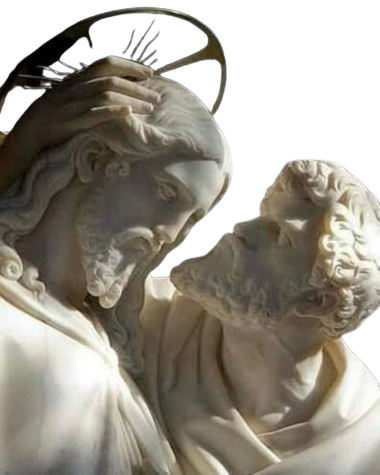

2 - 𝒥𝓊𝒹𝒶𝓈
So Judas, the ‘betrayer,’ although I was not able to find helpful historically-specific things that would help determine a birth time or nakshatras, I was reminded of this:
(Maybe tap on the images to view in more depth)—


Essentially, I was reminded of a theory that the disciples had correlations to the astrological signs. I for one found this both interesting and very much possibly containing some truth to it, as references to the Zodiac are “esoterically” all throughout the Bible.
Anyway, considering the above, Judas (prior to being replaced by another disciple) was associated with without debate (considering some of the disciples were assigned signs interchangeably in the above images) the sign of Pisces.
So I figured looking into the nakshatras that Pisces rules. These nakshatras are Purva Bhadrapada, Uttara Bhadrapada, and Revati.
Now, just as Kaikeyi, given her typical portrayal, was given another “retelling” or insight for her situation, Judas too has one of his own.
Though slightly less personal, shorter, and more ancient than Kaikeyi’s.
What I speak of is the Gospel of Judas, where Christ is conveyed speaking with Judas on a rather “higher-esteem” or “enlightened” take concerning his role in the things he was to do, giving another perspective to Judas’s being. Sort of similar to Patel and Kaikeyii (ALTHOUGH the Gospel of Judas is a scripture of sorts and the book Kaikeyii is fictional—again—don’t come for meee).

So, back to nakshatras, I have to admit, I could not easily see how Judas might have fit under a Deva nakshatra of Pisces. Rather, I think he would have embodied Purva Bhadrapada as a sun sign and Ashlesha as a moon sign. Which both are admittedly rakshasa in nature. Some of Ashlesha’s symbols are a serpent and male cat (I also saw somewhere that Ashlesha can mean “the embracer” or “a tight embrace,” which also reminded me of how Judas embraced Christ and kissed him before “betraying” him 👀).
Not to mention, the animal of Purva Bhadrapada is a male lion, and Judas’ name in its initial form would have been “Judas” or something of the sort. This goes back to the biblical tribe of Judah, which carries heavy lion connotations (Christ being the “Lion of Judah” or “Lion of God,” “God’s praise”), all of which essentially tie thematically to lions and even the Leo zodiac sign. This lion symbolism seems to resonate well with Judas’ role and the larger themes surrounding him.
Plus, Purva Bhadrapada has Jupiter as its ruler (which relates to Christ, being a teacher or guru) and has symbols of the sword, the two front legs of a funeral cot, and a man with two faces. These themes too seemed to stick out to me in relation to Judas’s life, role, and how he related to Christ—
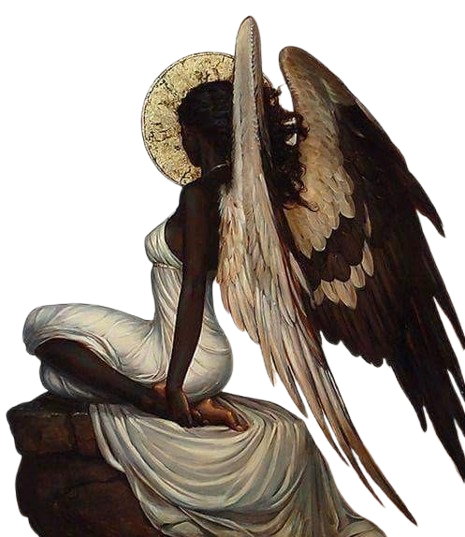

So in a nutshell, although I couldn’t necessarily find supporting evidence of Judas inherently being of deva nakshatras (I mean, cuz he like ancient-), for what I did “figure out,” I found it interesting that he was so closely associated with divine presences such as Christ (who I personally believe represents or coincides with Revati of Pisces). Judas is the rakshasa representation of Pisces whereas Christ, who was his supposed master, is the deva or divine representation of Pisces.
Either way, Judas was demonized—even though taking things from the point of view of divine guidance, perspective, and control, his role technically should not have been condemned. Especially taking into account Isaiah 45:7, “I form the light, and create darkness: I make peace, and create evil: I the LORD do all these things.”
Anyway, his case seems to be less of a strong argument for what I’m trying to prove, nevertheless, my “point,” if you will, from my initial post still remains.
thanks for reading luvss 🙈🧚🏼♀️💕
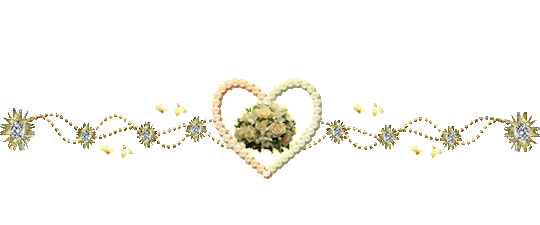
Edit: I'm just now re-reading this three months later, and I have to clarify a mistake I made concerning the gana Purva Bhadrapada is of bcuz it is not a rakshasa nakshatra it is Manushya (human, meaning a mix of both good and "bad" traits). soo, I don't know what I was on back at this time, but I'll still keep this up (just take it as a grain of salt please!)
#random#vedic astrology#vedic astro notes#judas iscariot#deva nakshatras#deva#rakshasa#rakshasa nakshatras#nakshatra#symbols#myth#philosophy#the gospel of Judas#gnostic teachings#gnostic gospels#random observations#pt 2
14 notes
·
View notes
Note
Okay so, thematically speaking, the reason why I think they'll use the Staff instead of Ascension for Summer is because the Hound, while smart, did not have the faculties needed to actually take ascension, and as shown with Alyx, dying in the Ever After just means you end up as a ghost forever instead of ascending, so the Staff is just about the only way they'll be able to de-Grimmify Summer.
(This is also why I'm thinking Summer being saved would mean Penny coming back for Round 3, or vice versa, given Penny's aforementioned thematic parallels with the Grimmified SEW's. If a dignified death is the closest to a happy ending Penny will ever achieve, then they'll have no choice but to mercy kill Summer. It's just a matter of whether Penny's return or Summer's rescue would come first.)
On somewhat a related note (given how my last two asks were combined), I'm also thinking Cinder's ascension would mark a good point to close out the penultimate Volume on, that way the Final Volume would have time to develop her next incarnation alongside Team RWBY, since they'd kind of have to flesh out her new identity.
Regarding Summer, I think the assumption that you’re making is that Grimm!Summer is going to be just like the Hound. And I really doubt that’s what we’re going to see.
Largely because I think Grimm!Summer simply being a raving, mindless monster would not be nearly as interesting, nor hit nearly as hard emotionally, as if she was fully cognizant.
As I’ve gone into in other posts, I think Summer is in fact fully cognizant and self-aware after having essentially become the SAME kind of Light/Dark hybrid that Salem is after a dip in the darkness pools. Though at the same time completely psychologically broken by Salem into being her willing follower. And that the Hound, the other hybrids and even Cinder herself have been part of Salem’s research and experiments into trying to replicate what happened to Summer, and herself.
Again, I think this would hit WAY harder than Summer just being a mindless monster. I mean just imagine Ruby, Yang, Raven, Qrow, etc. expecting a Grimm!Summer to be some raving monster just like the Hound… only for some mysterious armored humanoid grimm to unmask herself to reveal Summer, who ISN’T mindless and straight up says she’s serving Salem WILLINGLY.
For one, this allows Grimm!Summer to be an actual CHARACTER instead of just a big scary monster. It lets Summer be an actual VILLAIN who can have conversations and debates with Ruby, Yang and the rest of her family, rather than just spouting creepy disjointed phrases.
Most importantly, it allows Summer to be a proper antagonist and foil to RUBY. An actual character to properly represent and embody Ruby’s self-destructive hero-complex taken to its inevitable conclusion. A way for Ruby to confront and battle, both physically AND ideologically, this part of herself she struggles so much with.
Finally, it allows Summer to be saved not through esoteric magic, but through Ruby and Yang and Raven and the rest of her family getting through all the pain and trauma she’s suffered and convincing Summer to come back to them. And for Ruby in particular, to save who essentially represent a broken version of herself.
Which in turn, going back to your point, means that Summer is actually fully cognizant and able to attempt ascension herself.
Regarding Cinder, I do more or less agree with you on that. Particularly if we end up getting another volume or two after Salem’s defeat to deal with the Gods. It would certainly be good to have some actual time to explore and flesh out Cinder’s new identity.
#rwby#rwby ask#swapauanon ask#rwby theory#Summer Rose#Ruby Rose#grimm!Summer#Salem#Cinder Fall#character foils
9 notes
·
View notes
Note
Hello there! Great blog, as always. Thank you for posting such fascinating stuff. I have lately felt a draw towards Orphism and just finished reading A. Uzdavinys “Orpheus and the Roots of Platonism”. I figured you may find Uzdavinys interesting as he seems to provide a great deal of insight re. Orphism, Platonism, and Pythagoreanism — and how they were tied into the Mysteries practiced in ancient Greece. However, I was wondering about your take on his position that Platonism was descendant of Orphism and the ancient Egyptian mortuary cults, via Pythagoreanism. Although he states that it is difficult to say what the “original” Orphics authentically believed, as most of what was preserved of them are later Hellenic texts by and about Platonists and Pythagoreans, he goes on to say that this shouldn’t matter too much because there is essentially a single, continuous tradition brought into Greece from Egypt, albeit with possibly different offshoots along the way. Ultimately, he concludes that Plato and Pythagoras were both initiated into the Mysteries, and while they could never explicitly state it, there is no reason to suspect their philosophical thoughts, eg on immortality and transmigration of the soul, were at odds with the oath-bound mystery-religion connected to Orpheus and Egyptian funeral custom. In this regard, I am also wondering about the exact historical line on Herodotus’ relation to the initiatory cults, as well as the claims made by many Greek and Roman authors that the ritual concepts of the Mysteries of Orpheus, Dionysus, and Demeter/ Persephone can be traced from the funerary rituals of the Mysteries of Osiris and Isis. I am not sure I am convinced of such a direct line of influence, but the similarities are notable…
Thank you for your kind words and your appreciation for my blog, but also for your very interesting questions, and sorry for my delayed answer.
I have not read the book of Algis Uzdavinys on Orphism and Platonism. Uzdavinys was a legit philosopher and scholar, but he was also associated with the Perennialist School, which essentially believes that a common core of esoteric truth exists in all the great religious and philosophical traditions of humanity. This school is controversial (some critics even see in it just a reactionary sect), although it is undeniable that some of its members are important scholars in their fields (I have especially in mind Seyyed Hossein Nasr, who is politically and socially very conservative, but it is sure that he is one of the most eminent scholars of Islamic philosophy and mysticism in the world). Anyway, what is important for our topic is that I suspect that perhaps as Perennialist Uzdavinys tended to exaggerate the continuity between the religious traditions of Egypt and those of ancient Greece, but also the continuity between Orphism and Platonism. This does not mean of course that I see a priori his book as not valuable.
Orphism in Late Archaic and Classical Greece is a difficult subject with many uncertainties, about which scholars debate a lot for almost a century now, since the great books of Guthrie and Linforth on the Orphic movement. See among the most important publications of the last decades on Orphism Radcliffe G. Edmonds (editor) The "Orphic" Gold Tablets and Greek Religion: Further Along the Path, Cambridge University Press, 2010, and its review by Alexis Pinchard on https://bmcr.brynmawr.edu/2011/2011.10.54/, Radcliffe G. Edmonds Redefining Ancient Orphism. A Study in Greek Religion, Cambridge University Press, 2013, and its review by Robert Parker on https://bmcr.brynmawr.edu/2014/2014.07.13/, Anthi Chrysanthou Defining Orphism. The Beliefs, the ›teletae‹ and the Writings, De Gruyter, 2020, and its (for me too negative) review by Radcliffe G. Edmonds on https://bmcr.brynmawr.edu/2021/2021.03.13/.
Now, the truth is that I am not a scholar of ancient Greek religion and my ideas on Orphism are shaped by older books, especially Walter Burkert's great work Greek Religion. Therefore, I cannot have any certain knowledge on a topic about which there is so much uncertainty and disagreement among scholars. I remind here that Burkert believed that Bacchica, Orphica and Pythagoreia are circles with distinct centers, which partially overlap, but they are not identical. Burkert also believed that the Orphic myths of the late Hellenistic Rhapsodic Theogony, as they are preserved in texts of even later writers, existed already in the early Orphism of the Late Archaic and Classical times.
Anyway, it is beyond doubt that there are striking similarities between the myth of Osiris and that of Dionysus (a god is murdered, dismembered, and later resurrected) and between the Egyptian Book of the Dead and the "Orphic" gold tablets ("passports for the dead") from S. Italy (see on these similarities Thomas M. Dousa "Common motifs in the “Orphic” B tablets and Egyptian funerary texts. Continuity or convergence?", in The "Orphic" Gold Tablets and Greek Religion: Further Along the Path, and the presentation of Dousa's contribution in a paragraph of the review of this volume by A. Pinchard on https://bmcr.brynmawr.edu/2011/2011.10.54/).
I would also venture to say that, if an important Egyptian influence on the myth and rites of Dionysus and on Orphism is very plausible and in fact almost certain (it seems that Herodotus was at least partially right here), there are also some obvious crucial differences between myths and rites of Osiris and Dionysus/ Orphism: the ancient Egyptians did not believe in the transmigration of the soul in successive lives (although it seems that they believed, at least in the late period, in some sort of transmigration in the afterlife), the rites of Osiris were not "mysteries" in the Greek sense of the term, above all it does not seem that the Egyptian myth of Osiris had the major anthropological importance of the Greek myth of Dionysus (in the latter the humans were created from the ashes of the Titans, who were burned by Zeus' lightning as punishment for their crime against the child Dionysus, so that we humans partake both of the divine nature of the devoured and later resurrected Dionysus and of the criminal nature of the Titans- if of course, as Burkert accepts, this fundamental aspect of the myth existed already in the Late Archaic and Classial periods and underlied much of the ancient Greek rites of initiation, as well as Orphism and Pythagoreanism).
Concerning initiations of historical figures, there are reports of some late sources about an initiation of Pythagoras into the Cretan mysteries, but I suspect that the reliability of these reports is doubtful. What is more important for the relationship between Pythagoreanism and Orphism is that, as it seems, some texts attributed to Orpheus were in fact works of Pythagoreans of S. Italy, if not of Pythagoras himself, so that a version of Orphism was the creation of Pythagoreans: Burkert stresses the fact that the most important Orphic gold tablets with "instructions" to the dead have been found in S. Italy, exactly where Herodotus, who reports about the dependence of the Orphica on Pythagoreanism and ultimately on Egypt, finished the writing of his Histories, and come from a time close to his. But Pythagoreanism is not just Orphism, especially if one takes into account the Pythagorean emphasis on mathematics as the foundation of the structure of the cosmos, the scientific contributions of many members of the Pythagorean school, and the particularities of the way of life of the Pythagorean communities, especially their "communism", but also their political role in several Greek city-states of S. Italy. Conversely, Orphism is not just Pythagoreanism, as it seems that there were also other "Orphic" traditions besides the S. Italian/'Pythagorean" one (Burkert writes about the existence also of an Athenian-Eleusinian tradition of Orphism, although he attributes to the Pythagorean/S. Italian Orphic tradition the pioneering role concerning the theory of metempsychosis). Herodotus himself was, as it results from a passage of Histories (2.51), initiated into the mysteries of Samothrace, but, as Burkert says, these mysteries did not promise a better afterlife, only protection from the dangers of seafaring. Plato was almost certainly initiated into the mysteries of Eleusis, as, although initiation was not mandatory, almost all Athenians were initiated into Eleusis (the relationship between the mysteries of Eleusis, Dionysus, and Orphism is another very interesting and much debated question).
More particularly concerning Plato, I think that it is sure that he was much influenced by the revolutionary "Orphic" religious beliefs about the immortality of the soul and the kinship of a part of the human soul with the divine, things unknown to the traditional Homeric religion. Of course Plato's references to the Orphics are not always positive, as he treats some of their beliefs on the afterlife as naive and even ridicules some groups of them as charlatans (Republic 363-365). But the influence on him of more "sophisticated" versions of Orphism and above all of Pythagoreanism is I think beyond doubt. On the other hand, as it is already the case with the Pythagoreans, I believe that it would be wrong to see in Plato just or mainly an Orphic, because Plato is above all a philosopher, who takes positions in philosophical debates which had started more than a century before his birth, but also the founder of a new and great philosophical tradition of major significance in the history of thought. To refer to just one important topic, namely the immortality of the soul, for Plato this immortality could not be accepted just on the basis of the authority of the Orphic or other religious texts, but it needed a rational proof, and the search for it is exactly the subject of Phaedo, one of Plato's masterpieces (even if the required proof cannot be definitive- I think, moreover, that it is noteworthy and thought provoking that two persons in Phaedo who are sceptical about the immortality of the soul, Cebes and Simmias, are in fact... Pythagoreans). And of course there is more generally so much in Plato (in his ontology, epistemology, ethics, politics or even philosophical mysticism) that is far beyond the scope of the Orphic tradition.
4 notes
·
View notes
Text
On the Ritual Dagger and Other Tools
Originally this was a very targeted, well-researched post. However, as I started writing, I realized the real point of this article: my difficulty using iron in magic, and what that means for my selection of tools as a general rule. And in all honesty, that's probably more interesting than a scholarly history of the athame.
The magical community at large tends to accept the position that iron is disruptive to entities of the Otherworld, though the reasons why have been debated for centuries. Theories range from "ferrous metal disrupts subtle bodies" to "iron is symbolic of human industrialization".
I'm less interested in a mystical reason than a practical one—in other words, I accept that iron disrupts Otherworld denizens, but am more concerned with why it disrupts me. I find it very difficult to channel energy through iron tools of any kind.
The good news is that I'm not alone. Some practitioners work closely with the Otherworld, and iron tools hinder their work. Others prefer to use more natural material to reflect their connection with the web of life. Still others are just like me—they just find iron hard to use.
Are these alternatives standard to the Western Esoteric Tradition? No, absolutely not. There are reasons why iron is used for the athame—not the least of which is because of the disruption towards unwanted spirits. Of course, wanted spirits also experience the disruption, so there is that to consider.
Of these alternatives, bone and stone are the most common materials. Wood is much less common, as the material tends to be associated with Fire more than with Air (the standard elemental correspondence for the ritual dagger). But, if your tradition swaps the elemental correspondence so that the Wand is for Air and the Dagger is for Fire, there's nothing stopping you from obtaining a wooden ritual dagger.
Other materials that are nonmetallic, like resin, should be avoided on environmental and practical principles. Not only are many synthetics bad for the environment—which can hinder your connection with the living universe—they are usually very poor conductors of energy. That isn't to say you can't use them—I've seen plenty of people use resin wands—but I really don't recommend it.
So, what did I choose? I'll be honest, I didn't go out of my way to purchase new tools; I examined what I had on hand. And thankfully, what I found were two obsidian knives from a family trip to Cancun years ago.
Before I could use them, I had to cleanse and bless them. To do so, I decided to use the Druid method of Land, Sea, Sky. So I started by letting them sit in the sunlight for a few hours to cleanse and bless them by the Sky. After that, I waited for a storm and set them outside to be cleansed and blessed by the "Sea" (water). Finally, I wiped them clean and drove them into the soil to cleanse and bless them by the Land. Finally, they were ready for use.
First thing I did was cast alchemical glyphs in the air before me: invoking pentacle, banishing pentacle, fire, water, air, earth, spirit, etc.
My initial thought: the knives are very well balanced. One is about 7", the other about 4". I prefer the larger, if only because the smaller one is more fragile. However, they both have solid heft without being unwieldy. They're great for flourishing with.
My second thought was that the knives hold and channel energy with ease. That was a pleasant surprise—now I know it's the iron in the dagger, not the dagger itself, that gives me trouble (though to really confirm, I'd need to try other iron athames).
But here's the thing: these obsidian ritual daggers are not athames. Athames are specifically the black-handled, usually double-edged blade. So that raises a new question: where do we draw the line on swapping out tools?
Let's examine that in some detail. If we are to believe the four tools of the Western Esoteric Tradition are based in ancient sources, then what are those sources and how did they evolve into their current forms?
In the broadest strokes, the elemental tools of the Western Esoteric Tradition are the Wand, Dagger, Cup, and Disk.
Some sources speculate they originate from the Four Treasures of the Tuatha de Danaan: the Spear of Lugh, Sword of Nuada, Cauldron of The Dagda, and Stone of Fal. But if that were wholly the case, we would still be left with questions around how the Spear and Stone became Wand and Disk.
Let's keep digging and examine each tool individually, rather than as a set:
Wand: traced back to prehistory, but came into the forefront with Egyptian, Zoroastrian, and Greek priests.
Dagger: traced back to the Key of Solomon as one of several goetic tools.
Cup: traced back to prehistory as a tool for holding sacred and mundane liquids.
Pentacle: traced back to the Key of Solomon as a method of summoning entities.
Okay, so we can now see that these tools came from a few different places and have slowly grown together. Let me fill in some gaps: the wand is relatively the same as it was in ancient times; the dagger used to be several daggers but has since been standardized; the cup is still widely variable and can be a chalice, cauldron, or any other vessel; the pentacle is still widely variable based on tradition.
So that brings us back to our question: when do we substitute tools out? The "real" answer is whatever your tradition requires. But for those of us without a set tradition, the question becomes more complicated.
I've implied throughout this article that the tools are directly correlated to the four lower elements. So, it stands to reason that you would have a representation of each element on the altar.
Let's take the case of the Four Treasures of the Tuatha de Danaan:
Sword: Fire
Spear: Air
Cauldron: Water
Stone: Earth
For a more eclectic take, we can try:
Sage Bundle: Fire
Large Feather: Air
Bowl: Water
Plate: Earth
You're also not limited to "tools", either. In my Druidic practice, I place four vessels on the altar that contain:
Fire: Candle
Air: Incense
Water: Water
Earth: Soil
So really, the answer to the question "when do we substitute" is really "whenever feels most appropriate to you". The important things are that the items on the altar represent the four lower elements, and can be used for energy channeling. That's what makes it a tool, that you can use it to channel energy, not the fact that it's inherently a tool of some kind.
Thank you for reading. As always, stay safe and stay tuned.
Blessed be~
5 notes
·
View notes
Note
happy dadwc duchess! a prompt, perhaps for Cullen/Theresa post-Trespasser: "Who can tell me if we have Heaven? / Who can say the way it should be?"
happy writing :3
@dadrunkwriting
Okay no lie, this song literally started playing in my playlist as I was reading your prompt, so I’m taking that as a sign lol. Enjoy some epistolary goodness! Sorry, it ended up not being post-Trespasser, I was just feeling the letters passing back and forth too much and couldn't think of a post-Trespasser reason for it! ^_^
My dearest,
Looks like you’ve won the bet. The new training dummies didn’t last the week. I suppose that serves me right for underestimating just how much force Cassandra can put into a swing. Lesson learned. I don’t know what’s worse – losing the bet or the knowledge that she’s been holding back in our sparring matches.
We never did decide on the terms. I’ll let you name them, considering it’s your victory.
All my love,
Cullen
***
My lion,
I claim my prize as a round for the whole of the Herald’s Rest upon my return to Skyhold, on you. As for Cassandra, trust me – you don’t want her going all out against you.
Hope to see you soon,
Theresa
***
Tess,
Don’t think I don’t know what you’re doing. I am perfectly capable of socializing on my own without your nudging. Re: Cassandra, that sounds like a story. I insist you tell it when you’re safely back. Over drinks, at the tavern (see?).
I miss you.
Love,
Cullen
***
It’s a date. I miss you too. – Tess.
***
My love. I keep trying to read these reports but my eyes keep wandering to the chair you always use when you’re here. It’s currently filled with requisition orders. Do you know, I use your impending returns as motivation to finish them, just so you can have your chair? I’ve never admitted that to anyone. Please don’t tell Leliana.
And come home soon.
– Cullen
***
Tess,
The repairs on the western tower have finally been completed. Fiona and her lot are already making themselves at home. I’ve never seen so many oddly shaped glass containers. But they insist they’re close to a breakthrough on improving the dispersion of the healing mist grenades, so I suppose they must be serving some function. One of them tried to explain the specifics to me, but I confess most of it went quite over my head. You’d have had no trouble understanding him, I’m sure.
I hope I’m there to see your face when you look at their progress for the first time. I think you’ll be pleased.
I hope you’re well. Please write back when you can.
Love,
Cullen
***
Darling,
I apologize for bombarding you yet again. If you’ve sent me a reply, I haven’t received it. Are you well? I overheard an interesting conversation today between two of the men out of Hasmal. I doubt they knew I was within earshot or they wouldn’t have spoken so freely.
They were debating whether it is truly a heaven to walk at the Maker’s side in death, or if that is the punishment. One believed that to spend eternity bathed in the light of His gaze is the ultimate desire, while the other said that the real desire comes in the seeking. That once you have heaven, there is nothing to desire. The first man told him that’s why he’s still single.
I agree with the first man.
– Cullen
P.S. – I worry I get a little too esoteric in these letters sometimes. Perhaps I should stop writing them so late at night.
P.P.S. – Still not dawn. I long to watch the sunrise with you my love.
***
I pray this letter finds you safe and well. I’ve seen the reports out of the Emprise. Please. Please. Be safe. Write when you can. – Cullen
***
Cullen:
I’m alright. Sorry to have worried you. I don’t know why I’m writing this. They’ve told me you’ll be here within days to inspect the progress on the Keep. But I thought at least I should answer some of your letters.
Please, never apologize for “bombarding” me. Your letters are my small corner of peace in my travels. To see your handwriting after a long day is worth more to me than an eternity in the Maker’s light.
As for the conversation you eavesdropped on – yes, eavesdropped, my love, don’t think I missed you trying to downplay that – I think both men are right, in a way. Desire does fade once you’ve achieved what you wanted, yes. But what replaces it is even better – peace.
I relish the anticipation of you as much as the feel of your arms around me. Both are a kind of heaven.
– Tess.
#dadwc prompts#my writing#epistolary#theresa x cullen#cullen rutherford#theresa trevelyan#cullen x inquisitor#enya prompts
10 notes
·
View notes
Text
Dear Anthropocene Working Group:
It is with mixed emotions that I am sending this letter to resign from the Anthropocene Working Group. I’ve been a member since AWG began in 2009 and many of my most treasured experiences as a scholar have unfolded with AWG. Over most of the past 14 years, AWG has exemplified the kind of scholarly community that encourages exploration of new ideas and evidence and the spirit of open collegial debate needed to build strong science. Even though, as an ecologist, my professional perspectives and contributions have often differed from the core views of the group, I’ve generally found these to be welcome and productive. For all of these reasons, I feel sadness in resigning.
Nevertheless I must resign, for two reasons. The first is that things have changed within the group, as exemplified by the increasingly corrosive nature of discussions surrounding two recent resignations. AWG has become so focused on promoting a single narrow definition of the Anthropocene that there is no longer room for dissent or for a broader perspective within the group. This narrowing of perspective began to emerge years ago, with the 2016 vote deciding that only evidence supporting a mid-20th century start date would be considered in Anthropocene definition. Looking back, I probably should have resigned at that time. But recent efforts to promote the group’s final GSSP and site proposal have now established beyond doubt that there is no longer any place for broader perspectives on Anthropocene definition within AWG. The group exists only to promote one single narrow perspective, and differing views are no longer acceptable. I clearly no longer have any useful role in the group.
Second, it is no longer possible to avoid the reality that narrowly defining the Anthropocene in the way AWG has chosen to do has become more than a scholarly concern. The AWG’s choice to systematically ignore overwhelming evidence of Earth’s long-term anthropogenic transformation is not just bad science, it’s bad for public understanding and action on global change. This, at a time when broader cooperation to address these grave societal challenges is more critical than ever.
To define the Anthropocene as a shallow band of sediment in a single lake is an esoteric academic matter. But dividing Earth’s human transformation into two parts, pre- and post- 1950, does real damage by denying the deeper history and the ultimate causes of Earth’s unfolding social-environmental crisis. Are the planetary changes wrought by industrial and colonial nations before 1950 not significant enough to transform the planet? The political ramifications of such a misleading and scientifically inaccurate portrayal are clearly profound and regressive. Perhaps AWG’s break in Earth history will simply be ignored outside stratigraphy. But this is undoubtedly neither AWG’s goal, nor is it the way AWG’s narrative is being interpreted across the public media.
I was first inspired to work on the Anthropocene as a geological concept in 2008, in response to the GSA Today article led by Jan and the exciting scientific and societal discussions surrounding it. Soon after, Jan and I organized a session together and met in person at the American Geophysical Union meeting in San Francisco in December 2008. I was then asked to join AWG and gladly accepted. Many good years of scientific collaboration followed.
As a scholar who has actively worked within a group now promoting a misleading and regressive perspective on Earth’s transformation by human societies, I feel obligated to respond. First, by formally ending my association with the group, and in the long term, by doing my best to counteract the damage created by this misleading perspective based on the best available science.
I have many fond memories and I retain my respect and admiration for all my colleagues in AWG. I remain hopeful that the Anthropocene as a concept will continue to inspire efforts to understand and more effectively guide societal interactions with our only planet. I no longer believe that the AWG is helping to achieve this and is increasingly actively accomplishing the opposite.
I therefore wish to formally resign from the Anthropocene Working Group.
Sincerely, Erle Ellis
7 notes
·
View notes
Text
Heavens' Paradise Lost: Their biblical counterparts part 2
Tumblr couldn't handle my extensive summary because reasons and made me redo the archangels parts again I have pain for this but here is the Beside You part
Fall on me can be found here
Uriel
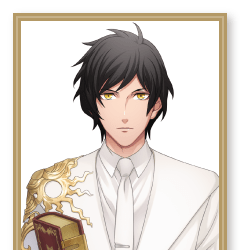
Uriel, Auriel or Oriel is the name of one of the archangels who is mentioned in the post-exilic rabbinic tradition and in certain Christian traditions. He is well known in the Russian Orthodox tradition and in folk Catholicism (in both of which he is considered to be one of the seven major archangels) and recognised in the Anglican Church as the fourth archangel. He is also well known in European esoteric medieval literature. Uriel is also known as a master of knowledge and archangel of wisdom.
Where a fourth archangel is added to the named three, to represent the four cardinal points, Uriel is generally the fourth. Uriel is listed as the fourth angel by Christian Gnostics (under the name Phanuel). However, it is debated whether the Book of Enoch refers to the same angel by two different names. Uriel means "God is my flame", whereas Phanuel means "God has turned". Uriel is the third angel listed in the Testament of Solomon, the fourth being Sabrael.
Uriel appears in the Second Book of Esdras found in the Biblical apocrypha (called Esdras IV in the Vulgate) in which the prophet Ezra asks God a series of questions and Uriel is sent by God to instruct him. According to the Revelation of Esdras, the angels that will rule at the end of the world are Michael, Gabriel, Uriel, Raphael, Gabuthelon, Beburos, Zebuleon, Aker, and Arphugitonos. The last five listed only appear in this book and nowhere else in apocryphal or apocalyptic works.
Uriel is often identified as a cherub and the angel of repentance. He "stands at the Gate of Eden with a fiery sword", or as the angel "who is over the world and over Tartarus. In the Apocalypse of Peter he appears as the angel of repentance, who is graphically represented as being as pitiless as any demon. In the Life of Adam and Eve, Uriel is regarded as the spirit (i.e., one of the cherubs) of the third chapter of Genesis. He is also identified as one of the angels who helped bury Adam and Abel in Eden.
Gabriel

In the Abrahamic religions, Gabriel is an archangel with the power to announce God's will to humans. He is mentioned in the Hebrew Bible, the New Testament, and the Quran. Many Christian traditions – including Catholicism, Eastern Orthodoxy, Lutheranism, and Anglicanism – revere Gabriel as a saint. In the Hebrew Bible, Gabriel appears to the prophet Daniel to explain his visions (Daniel 8:15–26, 9:21–27). The archangel also appears in the Book of Enoch and other ancient Jewish writings not preserved in Hebrew. Alongside the archangel Michael, Gabriel is described as the guardian angel of Israel, defending its people against the angels of the other nations.
Gabriel's first appearance in the New Testament, concerns the annunciation of the birth of John the Baptist. John's father Zacharias, a priest of the course of Abia, (Luke 1:5–7) was childless because his wife Elisabeth was barren. An angel appears to Zacharias while he is ministering in the Temple, to announce the birth of his son. When Zacharias questions the angel, the angel gives his name as Gabriel: "10 And the whole multitude of the people were praying without at the time of incense. 11 And there appeared unto him an angel of the Lord standing on the right side of the altar of incense. 12 And when Zacharias saw him, he was troubled, and fear fell upon him. 13 But the angel said unto him, Fear not, Zacharias: for thy prayer is heard; and thy wife Elisabeth shall bear thee a son, and thou shalt call his name John. 14 And thou shalt have joy and gladness; and many shall rejoice at his birth. 15 For he shall be great in the sight of the Lord, and shall drink neither wine nor strong drink; and he shall be filled with the Holy Ghost, even from his mother's womb. 16 And many of the children of Israel shall he turn to the Lord their God. 17 And he shall go before him in the spirit and power of Elias, to turn the hearts of the fathers to the children, and the disobedient to the wisdom of the just; to make ready a people prepared for the Lord. 18 And Zacharias said unto the angel, Whereby shall I know this? for I am an old man, and my wife well stricken in years. 19 And the angel answering said unto him, I am Gabriel, that stand in the presence of God; and am sent to speak unto thee, and to shew thee these glad tidings. 20 And, behold, thou shalt be dumb, and not able to speak, until the day that these things shall be performed, because thou believest not my words, which shall be fulfilled in their season."
— Luke 1:10-20 After completing his required week of ministry, Zacharias returns to his home and his wife Elizabeth conceives. After she has completed five months of her pregnancy (Luke 1:21–25), Gabriel appears again, now to Mary, to announce the birth of Jesus:
"26 And in the sixth month the angel Gabriel was sent from God unto a city of Galilee, named Nazareth, 27 To a virgin espoused to a man whose name was Joseph, of the house of David; and the virgin's name was Mary. 28 And the angel came in unto her, and said, Hail, thou that art highly favoured, the Lord is with thee: blessed art thou among women. 29 And when she saw him, she was troubled at his saying, and cast in her mind what manner of salutation this should be. 30 And the angel said unto her, Fear not, Mary: for thou hast found favour with God. 31 And, behold, thou shalt conceive in thy womb, and bring forth a son, and shalt call his name JESUS. 32 He shall be great, and shall be called the Son of the Highest: and the Lord God shall give unto him the throne of his father David: 33 And he shall reign over the house of Jacob for ever; and of his kingdom there shall be no end. 34 Then said Mary unto the angel, How shall this be, seeing I know not a man? 35 And the angel answered and said unto her, The Holy Ghost shall come upon thee, and the power of the Highest shall overshadow thee: therefore also that holy thing which shall be born of thee shall be called the Son of God. 36 And, behold, thy cousin Elisabeth, she hath also conceived a son in her old age: and this is the sixth month with her, who was called barren. 37 For with God nothing shall be impossible. 38 And Mary said, Behold the handmaid of the Lord; be it unto me according to thy word. And the angel departed from her."
— Luke 1:26-38
Michael
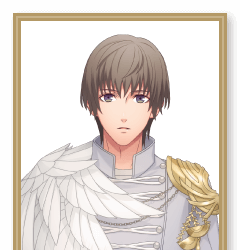
Michael, also called Saint Michael the Archangel, Archangel Michael and Saint Michael the Taxiarch is an archangel in Judaism, Christianity, Islam, and the Baha'i faith. The earliest surviving mentions of his name are in 3rd and 2nd-century BC Jewish works, often but not always apocalyptic, where he is the chief of the angels and archangels, and he is the guardian prince of Israel and is responsible for the care of Israel. Christianity adopted nearly all the Jewish traditions concerning him, and he is mentioned explicitly in Revelation 12:7–12, where he does battle with Satan, and in the Epistle of Jude, where the author denounces heretics by contrasting them with Michael.
The seven archangels (or four - the traditions differ but always include Michael) were associated with the branches of the menorah, the sacred seven-branched lampstand in the Temple as the seven spirits before the throne of God, and this is reflected in the Book of Revelation 4:5 ("From the throne came flashes of lightning, and rumblings and peals of thunder, and before the throne were burning seven torches of fire, which are the seven spirits of God" - ESV). Michael is mentioned explicitly in Revelation 12:7-12, where he does battle with Satan and casts him out of heaven so that he no longer has access to God as accuser (his formal role in the Old Testament). The fall of Satan at the coming of Jesus marks the separation of the New Testament from Judaism. In Luke 22:31 Jesus tells Peter that Satan has asked God for permission to "sift" the disciples, the goal being to accuse them, but the accusation is opposed by Jesus, who thus takes on the role played by angels, and especially by Michael, in Judaism.
Michael is mentioned by name for the second time in the Epistle of Jude, a passionate plea for believers in Christ to do battle against heresy. In verses 9-10 the author denounces the heretics by contrasting them with the archangel Michael, who, disputing with Satan over the body of Moses, "did not presume to pronounce the verdict of 'slander' but said, 'The Lord punish you!'
According to rabbinic tradition, Michael acted as the advocate of Israel, and sometimes had to fight with the princes of the other nations (Daniel 10:13) and particularly with the angel Samael, Israel's accuser. Their enmity dates from the time Samael was thrown from heaven and tried to drag Michael down with him, necessitating God's intervention.
Raphael

Raphael is an archangel first mentioned in the Book of Tobit and in 1 Enoch, both estimated to date from between the 3rd and 2nd century BCE. In later Jewish tradition, he became identified as one of the three heavenly visitors entertained by Abraham at the Oak of Mamre. He is not named in either the New Testament or the Quran, but later Christian tradition identified him with healing and as the angel who stirred waters in the Pool of Bethesda in John 5:2–4, and in Islam, where his name is Israfil, he is understood to be the unnamed angel of Quran 6:73, standing eternally with a trumpet to his lips, ready to announce the Day of Judgment. In Gnostic tradition, Raphael is represented on the Ophite Diagram.
His name derives from the Hebrew root רפא (r-p-ʾ) meaning "to heal", and can be translated as "God has healed". In Tobit he goes by the name Azariah (Hebrew: עֲזַרְיָה/עֲזַרְיָהוּ ʿĂzaryāh/ʿĂzaryāhū, "Yah/Yahu has helped") while disguising himself as a human. In the text he acts as a physician and expels demons, using an extraordinary fish to bind the demon Asmodeus and to heal Tobit's eyes, while in 1 Enoch he is "set over all disease and every wound of the children of the people", and binds the armies of Azazel and throws them into the valley of fire.
The New Testament names only two archangels or angels, Michael and Gabriel (Luke 1:9–26; Jude 1:9; Revelation 12:7), but Raphael, because of his association with healing, became identified with the unnamed angel of John 5:1–4 who periodically stirred the pool of Bethesda "and he that went down first into the pond after the motion of the water was made whole of whatsoever infirmity he lay under". The Catholic Church accordingly links Raphael with Michael and Gabriel as saints whose intercession can be sought through prayer.
Due to his actions in the Book of Tobit and the Gospel of John, Saint Raphael is considered patron of travelers, the blind, happy meetings, nurses, physicians, medical workers, matchmakers, Christian marriage, and Catholic studies. As a particular enemy of the devil, he was revered in Catholic Europe as a special protector of sailors: on a corner of the famous Doge's Palace in Venice is a relief depicting Raphael holding a scroll on which is written: "Efficia fretum quietum" (“Keep the Gulf quiet”). On July 8, 1497, when Vasco da Gama set sail from Lisbon with his four-ship fleet to India, the flagship was named São Rafael at the insistence of King Manuel I of Portugal. When the flotilla reached the Cape of Good Hope on October 22, the sailors debarked and erected a column in the archangel's honor. The little statue of Raphael that accompanied Da Gama on the voyage is now in the Naval Museum in Lisbon.
#uta no prince sama#utapri#eiji otori#ootori eiji#kira sumeragi#Sumeragi kira#nagi mikado#mikado nagi#shion amakusa#amakusa shion#Heavens#Paradise Lost Utapri#Heavens Utapri
4 notes
·
View notes
Text
Re: the world building post I got some stuff from my world/s
Currency
Bigger cities have a more consistent form of currency. The further a community is from big cities or the capital, the more likely they'd prefer to barter instead. Which commodities are more valuable depends on the area.
There is one city that uses leather squares as currency.
Perishable currency would be amazing but I'll need to go through a lot of hoops to come up with some acceptable reason any community would keep using that.
Marriage signifiers other than wedding bands
Fabric carries great cultural importance in one group of people. A baby's blanket would eventually become that same person's death shroud, if it weren't considered a heritage and passed on to the eldest. Marriages involve carefully cutting a strip from one's own blanket, then tying a braid together with their partner/s. It's usually just hung inside their home, but more extravagant weddings may have the braid be worn as a necklace or bracelet.
Gods that don’t look like people
Something I intentionally want to do.
So far: a god that is a tree, a god that is a forge, and one that's kinda 4D. Debating if I should let the most 'eldritch' deity figure be the most human-looking (and therefore have the strangest uncanny form).
Jewelry beyond precious gems and metals
Apart from the mentioned precious leather and fabric communities, petrified/crystallized organic material are also generally highly valued. These come from poisonous insect-like creatures. When threatened, they rub their wings together, causing poisonous scales to fall off. The scales 'dissolve' and slowly petrify organic matter they come into contact with.
Of course, this has led to hunting, exploitation, and invasion of lands where the creatures proliferate.
“Books” that aren’t bound or scrolls
Text tattooed on living people, meant to fade away upon death
"Living" information that "houses" itself in various objects, "moving into" the minds of a "reader" only and only if particular conditions are met
Magical communication that isn’t Fantasy Zoom
Inks with magical properties:
Invisible ink that is only readable to someone holding the correct predetermined "key", or the reverse - "censoring" ink that becomes invisible at certain conditions, revealing what is obscured underneath
Esoteric symbols and language used to encode more mundane, physical messages
Linked books: what is written in one appears on the other.
0 notes
Note
hello there!! (totally cool if u dont want to answer this) but i saw ur post of spiritual/religious red flags and i wanted to ask about the "lucifer is actually roman god" thing and why that would be a red flag? thanks!
Hello! I don't mind answering it.
So first of all, that list was a real spectrum with no clear indicator of severity, which I tried to disclose at the beginning. Some of the things on it are deeply harmful or subtly bigoted, while others are just kind of misinformed. Lucifer as a Roman god tends to fall into the latter, in my opinion.
I don't know your frame of knowledge coming into this, so I'm sorry if I over explain anything.
In Greek and Roman myth, there are a lot of anthropomorphic personifications that exist alongside the gods. Two of them are Phosphorus and Hesperus, the personifications of the morning star and evening star, or Venus as seen at dawn and dusk. That Latin corresponding word/name for Phosphorus is Lucifer, while Hesperus gets Vesper. So in the strictest sense of the word, there is a figure in Roman mythology (though in my opinion not a god per se) that is named Lucifer.
Where this gets messy for me is when people try to say that Lucifer as he is understood in Christian folklore is a Roman god. The only thing that links these two figures is a misunderstanding of an old translation, which I've brought up before here when discussing the actual lack of Biblical presence that Lucifer has by name.
As with many of the ideas on that list, there tends to be a best case scenario and a worst case scenario, and plenty of middling takes in between.
To me, when I hear someone say "Lucifer is a Roman god" in conversations about the Lucifer who's discussed in (most) Luciferianism, or the Lucifer as he's portrayed in Paradise Lost, or any other variation there of, the best I can hope for is that they're misinformed and incurious. It's the kind of take that falls apart with even a little research, so if it's being regurgitated as trivia, it seems more likely to me than not that they didn't actually bother to do any reading of their own.
What I tend to worry about, however, is that the individual in question might be trying to distance Lucifer (as he's commonly understood) from his cultural origins. While the blend and evolution of religious ideas is incredibly intricate and complex, there tends to be a blunt force version that's employed whenever people want to distance Christian or Jewish figures from their religions. I would say the "Lilith is Babylonian actually" crowd is being far more offensive with it, as they tend to debate actual Jewish people with their entire chests despite numerous citations that prove otherwise which they choose to willfully misinterpret. Likewise, it starts getting a bit Weird to me when people will try to claim that the spirits in the Ars Goetia are Old Gods™ just because some of them (and not all, mind you) have names that are taken from or inspired by existing deities. For example, the name Astaroth is thought to maybe be inspired by Astarte (despite belonging to a wildly different entity of a different gender) and Balam shares a name with a Biblical magician.
There is a fascinating web that can be studied picked at. I would love nothing more than to be a professional esoteric historian who's paid to spend all his time trying to suss out how much of ancient Canaanite mythology influenced later religious ideas and stories, or how Mithraism may have influence early Christianity. But when people are simplifying and exaggerating those connections to try and separate the figures that appeal to them from their cultural and religious roots... I have to wonder why. And I'm always hard pressed to think of a defensible reason.
Feel free to let me know if you have any other questions!
83 notes
·
View notes
Text
Okay buckle up this was a roller coaster...

I was gonna go back to edit in just 1 extra sentence to my Vollstandig post mentioning how [完] means “Complete” but is also the Japanese equivalent to "The End" or "end" or "finis" as a closing card on a film may have been a little word play to parallel with Bankai's translation as "Final Release." I thought maybe the two terms were written as synonyms with two different words for “final” and two different words for something like “form”
But naturally I wanted to double check the translation on Bankai to make sure the word play was similar, first...
And it was not.
So, for one... Ban[卍] doesn’t translate as “Final” at all, because it kind of isn't really a word??? I mean, it is a word; it’s a kanji, and it has a few pronunciations, but they don't really "mean" anything translatable? 卍 is what's called a “manji” and it refers to the Buddhist symbol, and is the Buddhist symbol to which it refers(obviously), but the phonetic name manji[卍字] has its own writing, as you can see, which means "manji+character" as in a written-character. So, the word references the character, which references the shape, but none of them have an attributable meaning.
In fact, in Viz's English translation, the first time this comes up in Tessai's use of bakudou to restrain Ichigo during his hollowification, they didn't translate it at all. They wrote things out as; "Binding Spell 99 Number 2!! Ban-kin!!!(Constriction Ban)" and "...Final incantation!! Ban-kin Tai-ho!!!(Constriction Seal)" and the whole incantation has issues, but I’ll tackle the whole of that some other time...
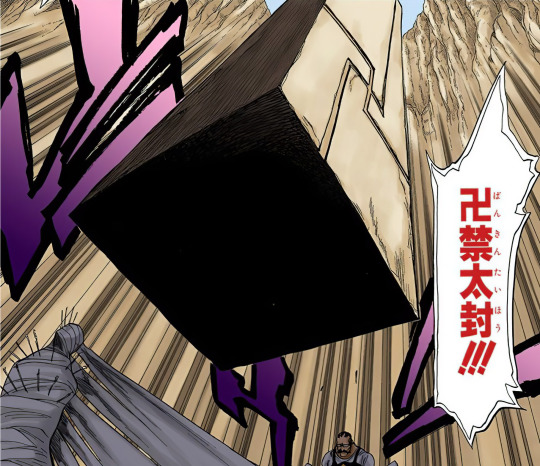

For now, the thing to note is that the -kin[禁] in bankin[卍禁] means "prohibition" and the Taihou[太封] in bankin taihou[卍禁太封] means "Grand Seal" (referring to the giant stamp-like pillar summoned to press down on Ichigo, literally like an ink or wax seal.) So it would seem like they've translated kin[禁] as "Constriction" and just called ban[卍] "ban" the first time, and ignored it the second. But in the context of the line it sounds like "(a) ban" which coincidentally would have worked as a translation of kin[禁] "a prohibition"="a ban." (In the context of the final phrase, it may have even been untranslatable, as it could just refer to the fact that the seal has a 卍 carved into the side of it.)
But there is just one hint as to how this might be read, and that is the fact that the actual word for 卍, manji[卍字] has an alternate writing: manji[万字]. And the same man[万] in manji[万字] and read as ban[万] just like [卍], so in both this case and the case of Bankai (stay with me, we'll get there...) it seems like a safe bet they're synonymous.
Man[万] is the word for "10,000" but it can also mean "many," "myriad," "various," "everything..." you see the linguistic dominos train we're playing with here, right? Each alternate meaning still brushing up against one another; Even as the meaning or usage drifts around, it all orbits the same idea. So it's not surprising that it's also a prefix meaning "All." And its use in [万字] refers to [卍] as the "all things symbol."

This is because the manji has great significance in Buddhism as a symbol of unity (literally where (all) things come together; an intersection/a cross), the whole of creation, infinity, and the revolving sun (hence its association with Ichigo and his Black Sun motif, which itself actually circles back around to drawing from some obtuse esoteric trivia relating to the swastika) It's even the default icon for Buddhist temples on maps in Japan --I bring that bit up for reasons I'll come back to later-- although I’ve heard that’s been in debate to change in the wake of increased foreign tourist attitudes about the symbol.
Anyway... Point being, bankin[卍禁] means "All Prohibition" or "Everything Prohibition" or "Prohibition (of) Everything," etc... (Alternatively "All Ban"/"Everything Ban")
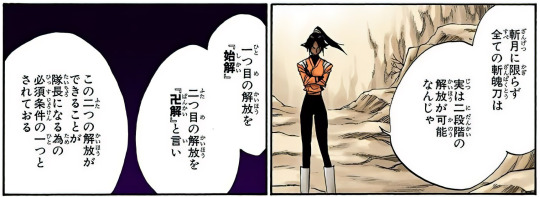
So, anyway... I went back to plug this into Bankai, and hey wait a minute... Kai[解] doesn't generally translate to "release..."
So I went back and quickly realized that we really didn't get the word "shikai" for quite a while, even as we were being show new zanpakutou and shikai forms left and right. In fact, we wouldn't get the term at all until Yoruichi used it to explain what bankai was for the first time.
But before we get to that, there's some important context, because we do get a number of words that are related to it...
Kaihou[解放] is the word for "release" that we hear repeatedly in reference to a zanpakutou changing form. As far back as Renji’s first appearance, he actually uses the word kaijyou[解除] which also means “release” but more like “release (from duty)” as he uses it to seal Zabimaru back into a standard katana, not summon it from... Yoruichi also specifically uses the term [常時解放型]: “Continuous Release Type,” when talking about Zaraki and Ichigo’s zanpakutou, which kind of solidifies that kaihou[解放] is the specific term to use for zanpakutou.

But we also get to meet Ichigo's hollow self for the first time during the Zaraki fight and he berates Ichgio for how he handles Zangetsu. He uses the word rikai[理解] specifically, meaning "Understanding," "Comprehension" or "Appreciation," and you'll notice the kai[解] in both those words is the same as in shikai[始解] and bankai[卍解].
So, the perfectly reasonable assumption when translating this seems to have been that [解] was basically an abbreviated form of kaihou[解放]: “Release.” And yeah, that's the most sensible literal reading. But there's a bigger word play at work here, because technically if it's being used as an affix kai[解] can mean "untie," "explanation," "solution," or "understand"/"comprehend." Again with the orbital words and one idea, all of these are akin to an "answer (to a problem);" the untying of a knot, the solution to a problem, the explanation of an idea, the understanding of a concept are all "the answer" to something.

In the context of what shikai and bankai actually are, this references how shikai is only to "beginning (of) understanding," and bankai is "understanding everything"/"total comprehension." It's the first and final steps in understanding a zanpakutou's sword spirit. And since the sword spirit is a reflection of the wielder, an understanding of the self...
So back us up to the ve~ry beginning... Vollstandig's kanji [完聖体] means "Complete Eucharist," written as "Complete+Holy+Form" or "Perfect+God+Body" where [聖体]:"Holy+Body" is the word for the christian Eucharist, or the act of Holy Communion...

Which means the Shinigami and Quincy final forms are [完聖体]:"Perfect [consumption of the body&blood of christ]" and [卍解]"Understanding of Everything" --but as I mentioned much earlier the 卍 symbol is synonymous with Buddhism. So, the two factions' final forms are alternate forms of the same idea: Buddhist enlightenment through “understanding,” and christian becoming one with god via “holy communion.”
So in a really funny round about way my gut instinct in thinking there was some kind of wordplay parallel here was absolutely right, but in no way like how I expected it to be...
74 notes
·
View notes
Note
For a variety of reasons, I got into a bit of a rabbit hole about Richard's guitars, and my brain went "oh I know someone who will probably have opinions on this" so essentially, if you feel like it, pretty please talk RZK guitars to me? Favourite? Retired one that needs to come back? (Though I probably already know the answer, that fancy black one?)
Allrighty, buckle up because this is gonna be long. After much consideration I have decided to split it up in two parts because I don’t think I can make it fit into one post that is still vaguely tumblr appropriate, and I really wanted to do it some sort of justice. I still feel like I don’t. But oh well. Full disclaimer, I am NOT a guitarist, but I lived with a few, two of my best friends are pro players and I’m a sponge so I kind of soaked some bits and pieces up over the last 15 years. But in case any lost guitar hero finds this and disagrees with me over the finer points of tone wood: I know honey, I oversimplified, and I am wrong. I tried? 💜 for easier read I formatted everything specific to Richard’s guitars normally and anything general about electric guitars in cursive.
My main sources besides watching about a 100 a month of guitar tube videos (that is youtube for guitarists) with my ex, my main sources will be this interview and this.
Richard Z. Kruspe (of Rammstein and Emigrate)’s Guitars - In Order of Appearance, Part 1/2
Diamant (Les Paul Style)
“I traded the acoustic for a guitar called Diamant, which was like a Les Paul version in East Germany.” - RZK
Now I’m skipping the acoustic he started out with, because it’s basically impossible to know what that was, and go straight into the electric. Now presumably, it would have been something like this, a soviet build Les Paul rip off. The irony is that these still go for several thousands up on reverb today for being historical and collectors pieces. The thing is, that while anything east build might have used cheaper materials, I would assume this thing isn’t worse than any of the beginner/intermediate models sold today, if not better, and kids all over the world do decent stiff with those.

Something general about electric guitars is that you don’t really so much play the guitar, you play an entire system. The instrument doesn’t make the sound, it only influences it. You play a guitar - but you even more so play the amp. Which makes this a bit tricky, because an e-guitar is a slab of wood and a copper coil, and amps are way more complex. You can make the exact same guitar sound so many ways. Still - there are tendencies. The fact how and why and to which degree the shape and wood of a solid body (a guitar without a hollow wood piece) influences the sound is highly debated and can get a bit esoteric sounding to sane people non-guitarists, but there are some differences in how the general set up and build of the guitar changes things, and tendencies how they are traditionally outfitted. Les Paul style guitars are normally humbucker guitars, Stratocasters and Telecasters normally are outfitted with single coils. Usually a guitarist can switch - between using the bridge, the neck, or both (or more) pick ups and depending on where the pick up is located they pick up different frequencies, different aspects of the sound. Humbuckers produce a richer, deeper or fuller sound than single coils. Very roughly speaking, think the Stones vs. Metallica.
Fender Stratocaster
“Then in East Germany, we had this imagination to get one of the great guitars, to me it was always the Fender Stratocaster because it was the Jimi Hendrix guitar. I didn’t know anything about pickups or humbuckers or whatever. So there was this guy that I met in a café in my old hometown and he was buying all these books because he could get all the books out through customs and he would store them in my apartment. So we became kind of acquainted. He would come over and pick up the books. So one time he came over and I asked him if he could get me a guitar and bring it over. In East Germany, if you exchange money from East to West it would be like 1 East mark and 20 West mark. SO everything I had, I changed it to West Mark and I gave him the money and I gave him the money and asked him to please buy me a Fender Stratocaster. I gave him the money and I didn’t hear anything for like three months, nothing. I wasn’t able to call because we didn’t have phones and stuff like that – it was a different time. So I thought fuck, I gave him 1400 west mark and now he’s gone and never coming back. [...] Then my imagination was so high, I thought the guitar would just play by itself and I wouldn’t really have to do anything, which I found out was bullshit. I was really happy that I had the guitar but it wasn’t really the sound that I had in mind.” - RZK
The first time I heard that story, I literally went “no, no, no, don’t be stupid, don’t give him your money, you won’t even like that guitar, stupid, lost dumbass.” I can not, for the life of me, imagine him play anything other than humbuckers. He apparently does use single coils for some things today again in the studio, but still, it’s so obviously wrong. He did play one again sometime during the late 90s, but I couldn’t find anything on the pick ups he used with that, but can hardly imagine he kept the original, unless he needed it for a specific sound maybe in one or two songs. I get it though. For many, many people the Fender Stratocaster is THE guitar. Jimi Hendrix is the main reason for that, but it’s also the countless idols that picked it up after him for the same reason, people who ended up plastered on the walls of angsty teenagers in their own right. This totally has to do with the whole amp thing aswell. You see your idol play that type of guitar ... but it’s not even half of the sound, and it won’t sound the same. Maybe probably they changed the pick ups, they have an effect rig, the spend hours fiddling with the knobs on an amp you can never afford. It’s never the same. Which is why ...


Fender Telecaster Black Gold
Then I had a guitar that I was very fond of. It was an older black and gold telecaster – there weren’t very many of them made at that point. I put a Seymour Duncan Jeff Beck SH-4 in there, like a humbucker. I remember it was like my beauty guitar and I needed someone to put that pickup in and I was with Paul and he had more experience with that stuff than me so he would get out a hammer and a chisel and he start banging away on it and I was like ‘Fuck! Fuck! Don’t do that!’ but we put the thing in there and it was one of my favorite guitars” - RZK

... this one first didn’t really make sense for me for him. It’s even more a classic single coil guitar than the Strat is, and it only really started making sense for me when I learned he Paul indeed put a Humbucker in there. It’s a stunningly beautiful guitar, and weirdly non-modern for him. I don’t know why and this is completely instinctual on my part, but I find it fitting he played it during that time after the wall came down, which seems to have been a rough time for him generally, it seems like a somehow super emotional guitar, this relic. Telecasters were some of the first electrics ever build, it’s such a pioneer, but it’s also one that alot of punk bands used, possibly because they were old and cheap in the 70s and noisy and people customized it and put other pick ups in. The whole putting a chisel to it and adding a humbucker into it is such a “I’m gonna make whatever I have fit for me, and I’ll love it” move. If you look at it, a double coil pick up is really something you have to force to go in there, you really have to break it open. There is also this:
“... and then I think I had to sell it because I needed drugs or something. I was really sad that I sold it because I was at a very low point in my life.” - RZK

If I would get the chance to do one thing only for him to thank him for his music, I would go back in time to that Richard who is just sad about selling that guitar and hug him, and tell him he doesn’t need to worry, because they will name guitars after him in the future. It breaks my heart so fucking much. But of course, it’s what opens the doors to what happens next, which is ...
ESP 901

“That led me to my very first convention in Frankfurt. With guitars, it is like with women, you have to fall in love. Sometimes you get a guitar and you fall in love later but there has to be some sort of connection with it. So I was walking around that convention and I saw that guitar hanging at the ESP stand. It was a 901 ESP Sunburst and I was looking at it because it was such a beauty. And I was walking around for hours – they probably thought I was some weird guy who wants to steal the guitar. I bought that guitar and that’s how I got connected with ESP.” -RZK
He might have fallen for it because it is pretty, but it did come with a ESP double humbucker set up, with an added condensator to muffle up the sound, although not yet an active one (more on that later). It was a 90s metal guitar, one of those things marketed to the Metallica generation, something loud and heavy and full. Also, and this is where I will put in another general insert, there is something else about the choice of electric guitars that we haven’t talked about yet.
Now, I’ve discussed that you can push or pull the sound of a electric quite far in one or the other direction with what pick ups you use, what effects, what amps. But what this ignores is that especially standing up a guitar is a really shitty asymmetrical piece of equipment. And what that does to your body is that it needs to fit you, your hands, and your playing style. Some people prefer it chunky, others like sender. Guitarists, especially the 80s shredders, like to talk about a “fast neck”, which is another one of those things that get slightly esoteric, but which usually means a slimmer neck and slightly bigger frets, that need less way for your fingers to press until the string gets stopped. Someone who plays very bendy blues might dislike that and prefer something to dig in their fingers more down to the fretboard to get more control over how they bend the string. There are different neck profiles, there are different neck lengths, and all of it contributes to how comfortable someone might find their guitar.
I am mentioning this, because until today, Richard’s guitars are build very similarly to that ESP 901. His Eclipse Model is a tad different (again, more on that later), but the one he uses the most, the RZK I, has the same neck scale, similar frets, and that comfortable ESP slender neck. Even the shape seems to be inspired by turning it upside down. He has said in interviews that he hasn’t got very strong hands, and it makes perfect sense to me. I bought my own electric (again, more on that later) purely because I wanted to own one and not even so much because I ever had any real ambitions of learning to play it, but my friends at the time (10 years ago now) forced me to try out alot (!) of models (despite me knowing what I wanted), and the only guitars that I tried that had slimmer necks were Ibanez guitars, which in turn were wider. Ironically Frankfurt is my hometown, so the place to try a lot of different models is That exact convention Richard went to, and I haven’t skipped a Musikmesse in the last 15 years. I was at atleast one were Richard was too (I just didn’t care at the time, yikes), and it somehow greatly pleases me he found “his” guitar at that particular convention. Things have changed in recent years, but electric guitars always were in Hall 4.01, with ESP being left of center in the middle, and I don’t know, I can just see him walking in circles around it, and it makes me so emotional for him because it’s what musicians do at that place. It’s really loud, everyone is playing, there is someone better noodling around at every corner, and it can be quite an intimidating setting I think. And every year you see that one kid coming back and back again to that same stand, staring at that one guitar until they finally work up the nerve and ask to try it (or the staff takes pity on them and offer). And it’s the same everytime, they think “oh god they must think I am crazy” but really, nobody does. Everyone in that hall who owns a heart knows what those dreams are made of, and all it maybe does inspire is a “oh god, I hope that one makes it”. I digress. I think it’s more common now to look for different neck styles and companies started caring about it, but especially coming from Fender and Gibson guitars, that neck is honestly just very, very nice for weaker hands.
This is where I will stop, because it makes a good moment for a break and this post is honestly getting too out of hand otherwise. There will be a part 2 - where Richard starts using active pick ups, starts playing my favorite guitar in the whole wide world (and stops playing it), and finally, set up his own signature.
This is him with that 901 though: when he must have had it pretty much brandnew, while he used it, and right before he sold it.



#richard kruspe#rzk#richard zk#rammstein#esp#electric guitars#can you tell I love him very much#although i might love the guitars more than him#i keep meeting guitarists and I never know if i like them or the fact they play guitar
82 notes
·
View notes
Photo
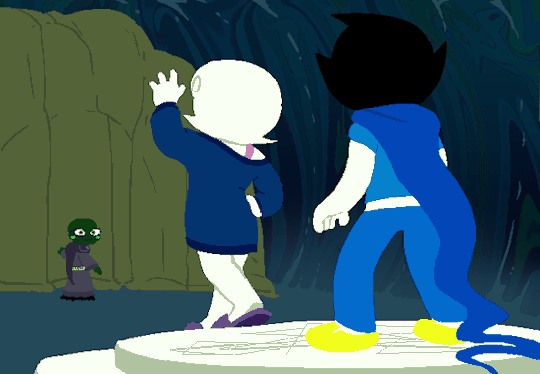


THE DEVICE
I don’t usually put images from the latest updates on main outside a read-more cut, but I’m getting further people messaging in today saying they think THE DEVICE hidden under a sheet in HS^2′s latest -- the one at the very center of the noncanon singularity, where they believe bringing Vriska and having something too important for Canon to ignore happen will make a difference -- matches the shape of the Hiveswap door.
And it definitely, INTENTIONALLY matches the general SHAPE of the door as well as its “trapped under a tarp” aesthetic, but in Homestuck that’s no guarantee that the device is the SAME, much less even similar.
Plus, as much as a Hiveswap door gives things a “trading between worlds” feel in a story where we’re ALREADY bifurcated between Meat and Candy sides, and as much as Dirk is specifically afraid of Yiffy in a metatextual making-that-story-better-than-mine sense, there’s some reason to believe from Calliope’s language that the goal of the device is a bit more esoteric:
CALLIOPE: as far as everyone else is concerned, we might as well not even exist! JOHN: is there no way we could let anyone know that we're in here...? CALLIOPE: almost certainly not! CALLIOPE: there are very few ways for anything to escape the kind of predicament that we are in right now.
If the device’s purpose were to more or less directly enlist the help of those in Canon -- at the present time, at least -- or pull one of them away while shoving another in their place who could relay the status of their current predicament, then Calliope answering John’s question this way would be pretty weird. Though, by using the weasel-wording “very few”, she does not rule OUT the idea that this device DOES allow SOMETHING to take place between Canon and Non-Canon. Especially since, considering their goal:
CALLIOPE: as far as we have been able to sUrmise, the only remaining method for escaping oUr grim confinement depends on leveraging the UniqUe properties of this location to create an event of sUch catalcysmic proportions that it simply cannot be contained within the black hole any more. CALLIOPE: something SO dramatic, so hyper-relevant, that it becomes ontologically impossible for anyone to ignore it. CALLIOPE: for that, we need an individUal of sUfficient narrative cloUt, so to speak.
--could easily be accomplished by forcing all of canon to heavily, HEAVILY depend on noncanon, by inserting some crucial event or extraneous factor at some important time and place, important beyond even the typical canon-centric doomed timeline’s occasional importance to the plot. Note, Calliope already mentioned, earlier in the conversation:
JOHN: you mean we ended up with the bad possibility. CALLIOPE: not at all! since both possibilities depend on one another's existence, it really doesn't make sense to call them "right" or "wrong". they both just "are".
--that Meat and Candy could not exist without each other. Which could just have to do with the fact that “choices” matter to Paradox Space, especially the choice to do something Heroic for the sake of reality or to relax and sit back, and that if it weren’t important enough to have required a choice, then it wouldn’t have been important enough at all. But Terezi had interactions with people across BOTH sides of the coin flip, and Vriska specifically was able to get a message through to her on Meat Earth C from deep in Candy (which Calliope lampshaded she would have been very surprised to find out happened-- another thing that makes Vriska powerful for sending things back and forth even if the "event" may or may not directly involve her, (edit:) not to mention John too with Breath's mail/messages association!).
So, simply sending ANYTHING or ANYONE across the gap, if this tarped machine even DOES that, wouldn’t do on its own-- it would have to be something important, important possibly to all existence. If you wanted to get super-serious, maybe even the as-of-yet-unsourced final frog sent to young Jade. Thus proving that without the Candy timeline, Earth C’s universe -- not only the place of the kids’ victory, but the eventual birthplace of Calliope and Caliborn and the origin of Lord English -- couldn’t exist at all, and consequently either forcing the Candy version of Earth C out of the singularity or forcing reality to acknowledge the fact that the WHOLE singularity -- all of “non-Canon” -- has relevance, and thus stability. Alt!Calliope would have made her fanfic-timeline come true.
But, that’s just one theory. I wrote this post so y’all could reblog and debate other possibilities for both the machine under the tarp and the dramatic act of relevance that they intend to have take place. Some sort of silly dramatic kiss? Shoving Vriska into Hiveswap’s timeline? An “oops, all Vriskas” disaster? I’ll keep this up to date with some of your theories and addendums under the cut as y’all reply/reblog and send in asks. What exactly do YOU think is the eventual, silly-serious-or-both purpose of all this bullshit?
titenoute said: “There has been people thinking at the beginning of Hiveswap that the Portal could link the characters of Hiveswap to Earth C. Tbh, knowing that Earth and Alternia are going to be destroyed in Hiveswap no matter what it makes sense to have the possibility they’d survive this way, by going through the portal.”
Anon points out that Dirk could have the other side of a Hiveswap door on his end under the tarp he’s hiding from Terezi, and I had some thoughts on that in the link, including what he might use it for.
#Homestuck#hs2#Homestuck Liveblog#upd8#Homestuck^2#spoiler#spoilers#Vriska#Theory Policy#Hiveswap#Roxy Lalonde#Calliope#The Device
134 notes
·
View notes
Note
Heya! Hope I'm not bothering you with this question but on Earth 777 (specifically NYC), how is society relatively made up when speaking of entities and cryptids? Is there laws directly impeding or affecting certain people who posses magical or otherwise unnatural abilities? What's the public's general view on the supernatural?
Amari: Good question! This is … a complex issue that still isn’t really resolved yet. What do I mean by that? This gets long so let me just… drop a read more.
Amari: Well, you see, Magic was not as visible to the mundane people as it is today and for many centuries Magic was a lot more esoteric and Patrons handed out pact deals a far less often. In fact, Magic was so rare that those wield it were highly sought after for their abilities by those who were in the know about it and wanted to use for their own gains.
Amari: In the years before magic became an open secret (anything before the 1980s), Magic was kept somewhat hidden out of the personal interest of the mages of the “pre-exposure” era. The truth is, Magic was (and still is) seen as a powerful weapon that could be used to protect their assets and such. The common reasons behind their actions towards concealment was to prevent other nonmagical people from competing with them, to prevent others from taking assets, and to keep nonessential people away from their dealings.
Amari: During this era, Entities were also typically concealed from the general public, for essentially the same reasons why Magic was kept a secret (though Entities were much harder to hide and were sometimes sighted much to the chagrin of those who wished to keep up the masquerade). Some entities did what they could to assimilate into human societies with the help of things such as glamour, others remained in the untouched wilderness away from nosy parkers, and the unlucky ones were sometimes hidden away in facilities by PLEA organizations as they were considered to be “valuable assets”.
Amari: However, this all would change beginning when Patrons became more open to sharing Magic to more people and soon, the masquerade was beginning to fall apart as more and more unexplainable phenomena and entities became truly visible for the first time. This time period during the 1980s was known as the Breaching. It took some time for all of these surmounting breaches to fully be publicly acknowledged but eventually, the masquerade couldn’t reasonably be sustained as it had been in the previous years. Magic and the entities are now an officially accepted fact of life in a post-masquerade world but even so, there’s still little truly known about either and there’s still much more research needed to truly understand them. Dedicated and important research conducted and/or collected by PLEA organizations are still kinda kept under wraps to this day, particularly information that they deem too valuable for the Average Joe to know. Which is why I am dedicating my grimoire, the Cobweb Compendium, to the education of the public at large. The world needs accessibility in information that can be life or death. And I’m here to provide it.
Amari: As for laws… well, there’s a lot of grey areas involved with the legal system having a lot of catching up to do in regards to legalities of certain actions and the legal status of various entities. There’s still quite a bit of debate and confusion on how to deal with particular issues that are found when trying to convict particular entities with crimes. For example, once a upon a time, the “demonic possession” defense was considered to be invalid but nowadays this defense is in the works for being considered acceptable in a court setting. And there’s the whole ghost legal situation I’ve previously mentioned.. and that’s at the tip of the iceberg of entity/magic legalities and justice. It gets… messy. I’m sure Mr. Murdock is having a field day with this.
Amari: As for public opinion on magic and entities… it’s mixed. Some people are fascinated and wish to learn more, some people are unsure what to make of them, some fear the presence of magic, some want to abuse magic… you can get a lot of different answers to that question. The truth is, right now it’s hard to really generalize people’s feelings about all this because there are uncertainties and confusing aspects about this that make magic and entities both a wonder and a terror in people’s minds. Maybe in a few decades when society has more experience with magic, their views will shift but for right now… magic is weird.
#amari santos | spider glass#worldbuilding#paranormal law enforcement agencies#matt murdock#answered#spiderverse#spider man au#spidersona
5 notes
·
View notes